- Home
- T. Jefferson Parker
Where Serpents Lie (Revised March 2013) Page 10
Where Serpents Lie (Revised March 2013) Read online
Page 10
Gene Vonn. Michael Hypok. David Webb. David Lumsden. Who was he, really? Well, it wasn’t that simple. His only hard rules were these: he would never be Gene Vonn again because he hated the source of that being; and he would never speak out loud the essential name Michael Hypok because it was his secret name, his secret self, his unspeakable and authentic center. Those rules aside, you just became whoever you needed to be for people you met. Same for the government, DMV, banks, merchants, service providers, neighbors. Everyone. Changeable, obscured, multifaceted, occult. And the documentation if you needed it was a snap for someone who had a valid Social Security number and who could build a young Eve from the marrow of his own secret rib.
Two hours and four stout tequilas later he had a beautiful little creation on the screen before him. Just her face now, disembodied completely from any body, as well as from any rules and laws governing her behavior. A girlish face, with a bit of plumpness around the dimples. The eyes just a little older than the rest of her, and a sense of carnal wisdom in them. Mouth open wide. Somewhat like his older sisters, Collette and Valeen, might have looked not long after he was born. Collie and Valee, his craven mavens. He saved the image and shrunk it down to fit one of the Dutch girls. Using the Blur command under the Filter heading, he gave her just a bit of dreamy distance. Click. He integrated the colors. He used the Sharpen button to strengthen the jaw and lip lines. Click. Then he used Pixilate to even out the grain of the whole image before he enlarged it, Despeckled the pixels just a little, then took it back down to a 5 by 7. Click.
Not bad.
Not bad at all.
Fifty bucks times however many copies he could sell before they got into general circulation on the Web. Fifty, maybe seventy-five. Then, they were worthless.
One down, ten to go.
Time to get cracking on the next Eve, he thought. He stared at the screen and rubbed his fingers over his new, whiskerless cheeks. He felt weary but nervous; spent but eager. Like he always did when a shed was coming on.
Sunrise began. He turned off his machines, then the fluorescent lights and poured a generous tequila as a nightcap. He locked the workroom door and padded in his slippers down the hall, past the kitchen and through the door to the backyard. Under the dark canopy of sycamores unsullied by stars he stood and listened, then let himself into the guest cottage. Incandescent twilight welcomed him. He shut the door and breathed deeply the scent of sawdust and serpent and fresh water. The cages lined two of the walls, each now lit by a UVA black heat bulb that cast a soft lunar glow into the room. Blue, almost silver.
The vipers looked as they always did, stoic and resentful. The cobras moved efficiently. Hard to believe the male ophiophagus is eighteen feet long now, Hypok thought. The harmless little colubrids were shy as usual, looking at him from beneath water dishes or decorative rocks as he passed their glass like a general inspecting ranks. Cute little soldiers, he thought: jewels. He stepped closer to look at the big Crotalus horridas horridus he’d collected in northeastern Texas many springs ago. About this time of year, he thought. What a severe beauty: gold and olive, black and pearl, like old leaves on rich soil, countless epochs of genetic mystery engraved on its skin. Five feet long and bigger around than his arm. Don’t tread on me.
He stepped back and looked at the whole wall of cages at once, unfocusing his gaze to include them all. What would happen to them if he let them go? He’d thought about it a lot lately, in the last few weeks. Not that he didn’t care for them. Not that he didn’t admire and even like them. But the idea of releasing them was part of something larger that was growing inside, and Hypok knew that when you grew inside you got bigger on the outside too, and had to shed your skin off to make room for the new, fortified thing you became. And once something started growing inside you it always kept on growing. It might go away for a while, but it always came back. Like … well. Once, just last week, he’d packed up all his snakes but one and driven them in his van out to Caspers Wilderness Park to set them free. But he’d just circled the remote parking area, then skedaddled on home, relieved that he could find no convincing reason to go through with it. It would be like letting little parts of your body go free.
But now, as he stood here contemplating all the cages and all the moving bodies within them, he told himself again—just as he had at the park—that to free them would be an act of deepest respect and love, the greatest thing he could ever offer these beautifully made, unthinking little machines. And every time he added to his collection he imagined the day he would set the new specimen free, didn’t he? Yes. Those were the best reasons he could come up with, though they hadn’t been good enough at the park and they weren’t good enough now. He knew they weren’t good enough.
The real reason was that he had to. You think it. You feel it. You see yourself doing it. Then you have to. To not do it is to deny your nature. Like … well, that again.
Then, oddly, he imagined letting them go and it was a pleasant thought—the right thing to do. It scared him, the way his mind could just flip one way and then another, like a switch. It meant a big change was coming on. Again. Take an Item but let the Item go free. Take another Item but let that Item go free. Get Collie to list the house for sale; then get her to unlist it. Drive to the park to let the snakes go; drive home without letting the snakes go. Black hair; brown hair; blond hair. Beard and mustache; smooth. There was no end to it. He reached into his robe pocket and took two nice big gulps off the flat hard bottle. There.
Then he backed away and turned to face the opposite wall. It was one huge tank, made of floor-to-ceiling panels of half-inch glass, built by Hypok’s own exacting hands. Moloch dozed in the water basin, his massive girth and weight supported by the liquid. When he inhaled, the water level rose perceptibly on the glass. Blue light, moon-silver shadows, moon-silver eyes. Tongue out. Tongue wavers in lunar glow. Tongue in. Moloch, his pride and joy, the diamond of all the jewels in his crown, his co-conspirator, blood brother, ally, friend and namesake. Something he would never let go.
Moloch.
Mike, for short.
Suddenly the silver twilight disappeared, replaced by a bright sunlike shine that cheered the room. The snakes all froze in place, uneasy, threatened by the change that could turn them from hunters into hunted. Hypok stiffened too, pure reflex. He felt suddenly exhausted with the thing growing inside him, with the way he kept changing his mind. Enough now. Enough!
He closed his eyes and willed away the pressure, willed away the indecision. For a while his brain was like jazz, just fizzing along without any pattern. Finally it quieted down so he could hear himself think.
Take the things between blinks just one at a time, he thought.
Be happy with what you have. Better. Better now.
Looking around, he was pleased to see his room, his snakes, his cages. Pleased to see his robe. Pleased that the new timer on his cage light circuit was working so well. Yes, pleased to see all of this. He owned it all, every bit of it. Well, Collette’s name was on the house but he made the payments to her, so that was just a protective technicality. His idea.
He started to feel better. His things anchored him. What you owned and what you created. He considered the new light that filled the room. Thanks to his timer there would now be twelve hours of artificial full-spectrum sunlight, a time for withdrawal and rest. A time for serpent dreams. In light that he created. In time that he owned.
Better.
He walked into the little rear bedroom and opened the lid of his UV chamber. He’d made it himself, from glass panels and a little wood, to fight the agony of his chronic psoriasis, which had afflicted him since boyhood. It was a medically proven fact that sunbaths were good for his condition, so he had created his own sun chamber to lie in, out of the sight of humans. Lamps along the inside of the lid; lamps left and right of him. Pillows for head and feet. Like a coffin with long rods of UV-emitting lights and heat lamps.
He took off his robe and slippers and the bracelet with
the little red serpent on it, flipped the switch, put on his sunglasses and climbed in. Easing down into the chamber he could already feel the heat lamps on his skin, already feel the drying sensation of the UV rays on his sores. Sores, he thought: thank my fucking mother again for those. Amusing, however, that the doctors called the patina that grew over the sores, “scale.” I’ll show you scale, he thought. He lay back, lowered the door and looked up through the glass. Must get more Lidex delivered. So much to think about, and the mind never stops.
He lay still, a festering human in a glass tube filled with light. He relaxed and let the light have him, let the pain of the flesh and the pain of the brain waft up out of him like spirits. He wondered where they went. All he knew for sure was that they never went away.
Half an hour later he padded out of the cottage and locked the door behind him, headed for the main house and his bed, where he could catch a few hours of well-deserved hibernation while the new day dawned.
EIGHT
Joe Reilly, the director of our Forensic Sciences Lab, had left an e-mail message for me the next morning.
NEW HORRIDUS STUFF. SEE ME ASAP.
I knew that Joe Reilly was a man who took his time to get things right. So I called Johnny at home and told him to start the search of the Sharpe residence without me. I knew that he and Louis and Frances would do better than just a good job—I trusted them completely.
I passed through the doors of the lab five minutes later and found Joe at his desk. It was six o’clock. Reilly is a soft-spoken and thoughtful man in his late fifties, with a head of minning black hair he combs straight back and a baby’s blue eyes. He’s Irish American, like me, and I’ve tried several times to exploit that connection, but Joe is so thoroughly fair and unbiased that my Irish-kin overtures have never worked. Though he was a San Francisco patrolman early in his law enforcement career, it’s hard to picture him wearing a gun, let alone pointing it at somebody. Through the department grapevine I’ve gathered that Joe’s off hours are spent studying astronomy and collecting rocks. He has the curiosity and the resourceful mind of a scientist, combined with a cop’s shrewdness about the evidence he analyzes.
Our Sheriff’s Forensic Sciences Laboratory is one of the best in the nation and operates free of the dictates of law enforcement. Joe Reilly set it up that way. You can’t get Joe or his people to slant things in a way that will help you make a case. They are meticulous—sometimes maddeningly so—about their procedures and chain of custody assurance. In Los Angeles County, for instance, the crime lab is run at the beck and call of the PD. Reilly testified at the first Simpson trial about proper methods of collecting, storing and analyzing blood evidence. He helped make the LA crime lab people look like amateurs.
He rose and shook my hand and congratulated me on the Sharpe bust. Joe and his people are wonderfully aloof from most department politics and squabbles, so I knew it was a heartfelt compliment. He led me out of his office and down the hallway to the Hair & Fiber Room, holding open the door for me as I stepped in.
“I think we made some faulty assumptions about the van,” he said. “Here.”
He took me over to a comparison microscope—actually two microscopes that let you see two different samples at once—and told me to have a look. What I saw on the right side looked like a piece of rope with strands of string peeling off the main shaft. On the left was another piece of rope, but you could see the stalk was relatively clean—no strands or strings attached.
“Hold on now,” he said.
He magnified the specimens, which enlarged them to the point that their shape was lost. But it revealed the building blocks of each. The one on the right was made up of ovaloid, asymmetrical cells that looked only loosely coordinated. The sample on the left was packed tightly with perfect rectangles, aligned precisely.
“You can’t tell under this magnification and light, but both samples appear red to the naked eye. The one on the left is the acrylic from the van interior. The one on the right looks a lot like it, until you use the scope. We were separating out the fibers collected from Pamela and Courtney, and one of the techs thought she saw a difference. When she ran them through the comparison scope, we found out we were collecting two different red fibers. One was the acrylic from a vehicle interior, but the other isn’t acrylic at all. It’s good old-fashioned lamb’s wool. And there aren’t many vehicle manufacturers right now using wool in their interiors. Not on something relatively inexpensive, like a van. The one on your right came from something else.”
I asked the obvious question.
“We’re not sure. The wool fibers were outnumbered five to one by the vehicle ones. That’s why we weren’t sure what we had, at first. There were six acrylic and one wool on Pamela, and eight acrylic and three wool on Courtney. Most of them were caught in that robe he put them in, that nylon netting.”
“Come on, Joe—cough it. What did the wool come from?”
I straightened up and looked at him. He smiled and nodded patiently. We field cops are always trying to get him to commit to something definitive and absolute, something to answer our many questions. Forensic science, of course, isn’t often that easy.
“Could be a wool blanket. Or sweater. We’ve already got wool/rayon fibers that are probably from some kind of garment—a sport coat. But a red sport coat? Not likely. Plus, the diameter of these are quite a bit thicker than the wool/rayon ones. They’re processed for softness. These would make a plush, flexible material, not something strong and tight like a jacket. So—sweater, blanket, bedspread, stadium wrap—something built to be supple and comforting.”
“A scarf or muffler?”
“Possibly.”
“Socks?”
“Not likely. Too short. Too full. They’d process them for length and tightness for footwear. My guess is they don’t come from a garment.”
I bent down and took another look. “The fiber didn’t come from the van.”
“Right.”
“Then we might have been wrong assuming the van is where he does what he does to these kids. It might not be the van at all. His rape kit could be anywhere.”
“Well, his almost-rape kit. That’s right.”
I stood up straight and let my thoughts settle. “It makes sense,” I said. “He holds them for several hours, from what we can tell. A van is safe, but it’s not comfortable and it’s not soundproof. He’s got them bound and held. There’s no bathroom, no space, no way to stand up and move around unless he’s got a van conversion. Courtney’s mom said it was a regular van, not a conversion with the extended roof. So why not just take them somewhere roomier, more like home? A bed with a nice wool bedspread on it. Or a blanket?”
“That thought crossed my mind, too. Any likely places come to mind?”
“The guest house on his property.”
“Oh, the profile.”
I looked at Joe and caught the skepticism in his gentle blue eyes. “No,” he said, sensing my argument before I made it. “I think the profiling is a good tool. Those guys are right a lot of the time. It’s just not physical evidence. This is physical evidence. All I’m saying is, what if The Horridus doesn’t have a detached guest house? Then we’re heading down the wrong path the whole time. Look at all the man-hours wasted on real estate listings. That’s all. That’s why I’m the crime lab guy and Strickley is the profile guy. It all helps. They’re all just pieces of the same puzzle.”
“Well, he’s at least got a bedroom or a living room, with something red, made out of wool, in it. And the girls are getting fibers from it on them. And when we find him, we’ll be able to match what’s in the microscope to something this guy has.”
Reilly nodded. “That’s all I’m prepared to say right now. Unless, of course—”
“—He gets rid of it.”
“Right.”
We looked at each other in a silence that grew dreadful.
“What the hell is he doing to these kids for six hours, Terry?”
I couldn’t
answer so I didn’t
“There’s something else you should see.”
I began to speculate on how The Horridus might conveniently rid himself of incriminating items. Say he really was undergoing a profound change in behavior, like Strickley had predicted. Say he was selling, or already had sold, his van. Say he was going to sell his house. Why not have a garage sale, too, and shed—just like a snake—not only the skin of who he used to be, but evidence that might damn him? Why not sell the house furnished? Why not burn it down and collect his homeowner’s insurance?
I followed Joe to the counter on the other side of the room. He stopped and looked into one of the lab’s new scanning electron microscopes, then stood back and nodded to me. The magnified object was flat and triangular, with rounded corners. The two sides were just slightly longer than the base. It looked kind of like a guitar pick. Running lengthwise from the middle of the base to the peak was a thin raised ridge. It appeared rough and dusty.
“I spent some time with the netting yesterday,” he said. “I knew it was nylon, and thought it might retain some body oils when The Horridus handled it, but you know how tough plastics can be on blood—it just smears the carbon dust. Plus, how can you lift a continuous print off a mesh? I hung Courtney’s robe and Super-Glued it, just to see what might show. I was right, the cyanoacrylate hung on the prints. There wasn’t anything continuous enough to be useful, but when I was looking at the prints with the glass, I found what you just looked at in the scope. It was folded over once, along the ridge, and caught in one of the squares of the net, like a magazine folded over and put in a mailbox. I thought it was a fish scale, until I remembered Strickley’s profile. Then I thought—snake scale. So I went over the net one inch at a time, looking for more. Nothing. I did the same on the first one—Pamela’s outfit—and struck out there, too. So I took it over to Gordon Marshall at UCI and he said lizard or snake. It’s not an actual scale, it’s a shed impression. Marshall said it was a dorsal scale, from the back. The ridge is called a keel, and the scale type is called a keeled mucronate. Snakes and lizards all over the world have keeled mucronates. But the only local reptiles big enough to have a scale like that one are rattlesnakes and gopher snakes—the others are smooth—no ridge. He said this is from a big animal—maybe four or five feet long.”

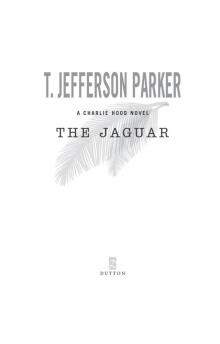 The Jaguar
The Jaguar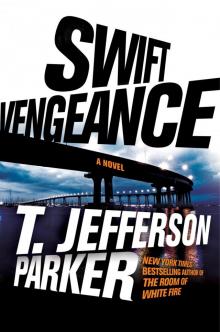 Swift Vengeance
Swift Vengeance THE BLUE HOUR
THE BLUE HOUR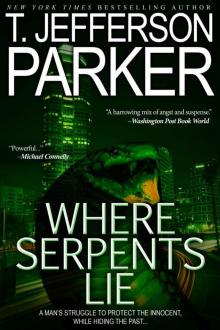 Where Serpents Lie (Revised March 2013)
Where Serpents Lie (Revised March 2013)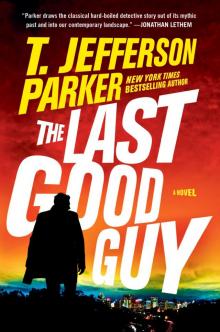 The Last Good Guy
The Last Good Guy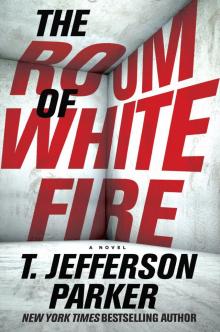 The Room of White Fire
The Room of White Fire Then She Vanished
Then She Vanished The Border Lords
The Border Lords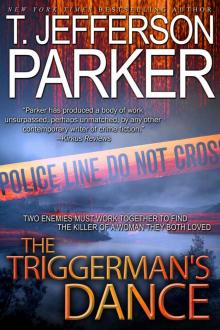 The Triggerman's Dance
The Triggerman's Dance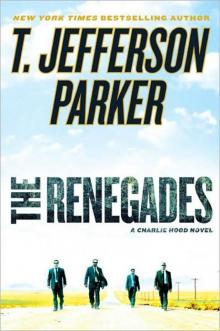 The Renegades
The Renegades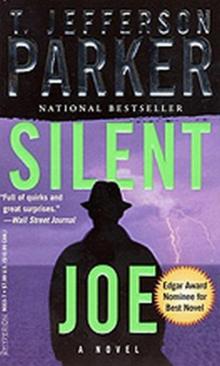 Silent Joe
Silent Joe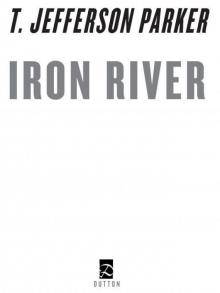 Iron River
Iron River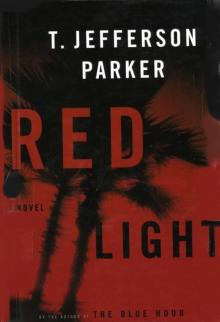 Red Light
Red Light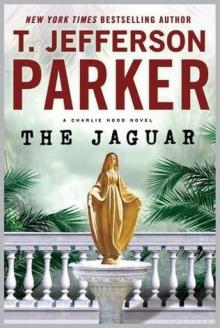 The Jaguar ch-5
The Jaguar ch-5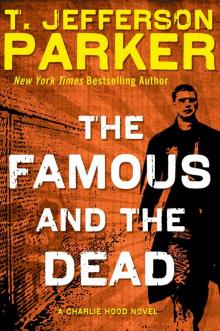 The Famous and the Dead ch-6
The Famous and the Dead ch-6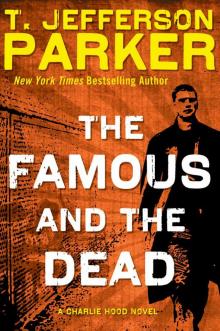 The Famous and the Dead
The Famous and the Dead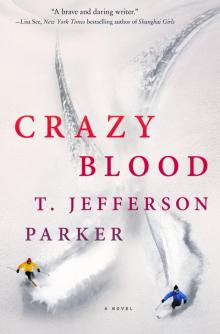 Crazy Blood
Crazy Blood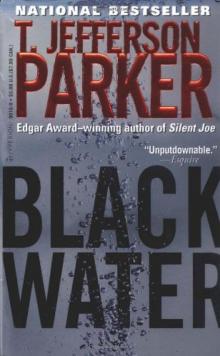 Black Water
Black Water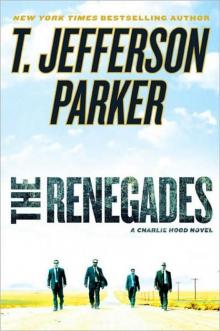 The Renegades: A Charlie Hood Novel
The Renegades: A Charlie Hood Novel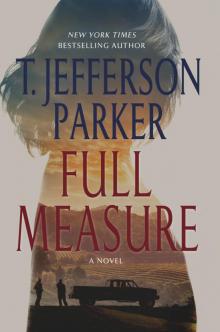 Full Measure: A Novel
Full Measure: A Novel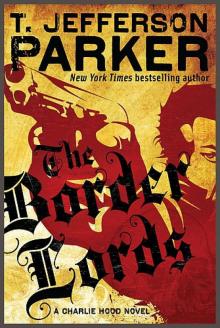 The border Lords ch-4
The border Lords ch-4 California Girl
California Girl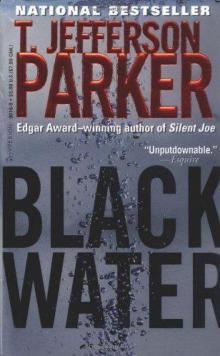 Black Water mr-3
Black Water mr-3 Little Saigon
Little Saigon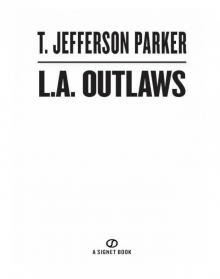 L. A. Outlaws
L. A. Outlaws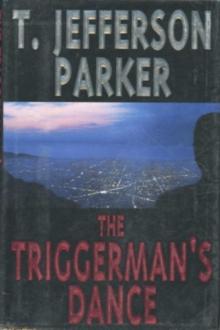 The Triggerman Dance
The Triggerman Dance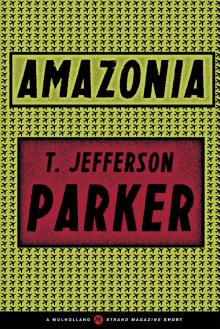 Amazonia
Amazonia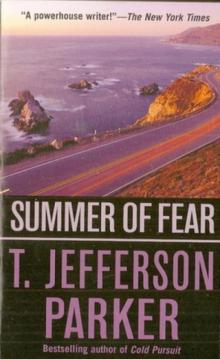 SUMMER of FEAR
SUMMER of FEAR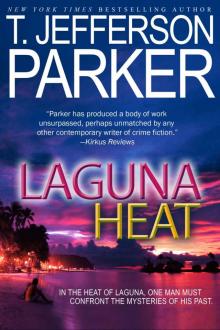 Laguna Heat
Laguna Heat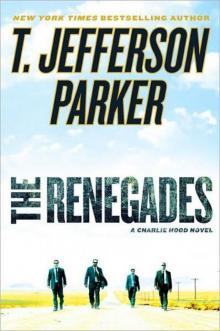 The Renegades ch-2
The Renegades ch-2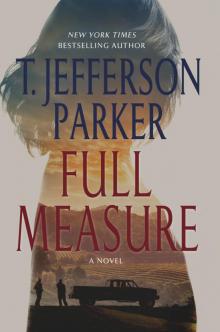 Full Measure
Full Measure